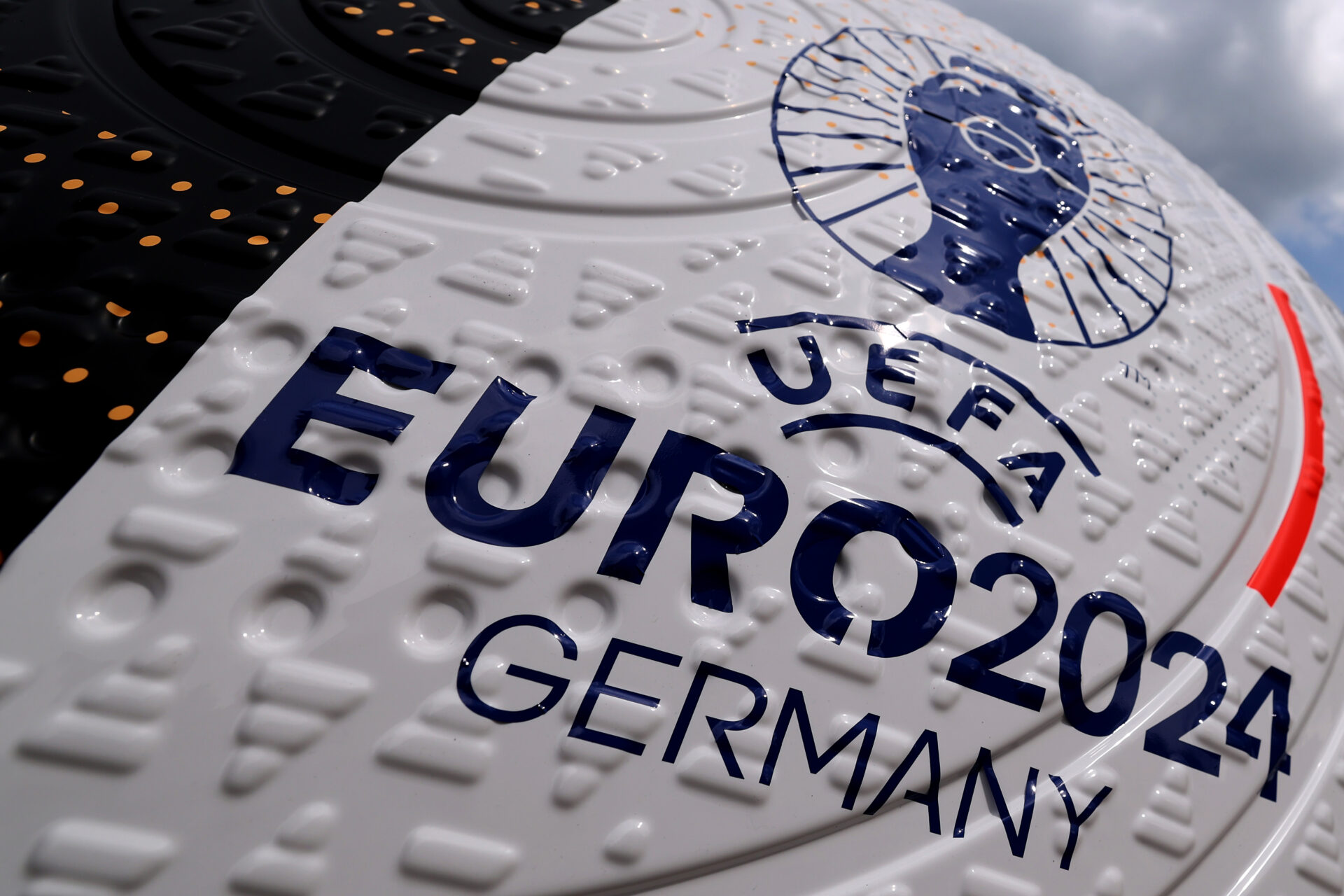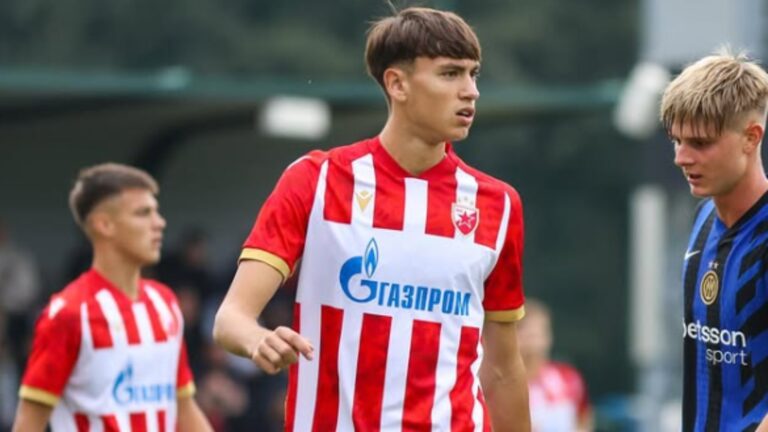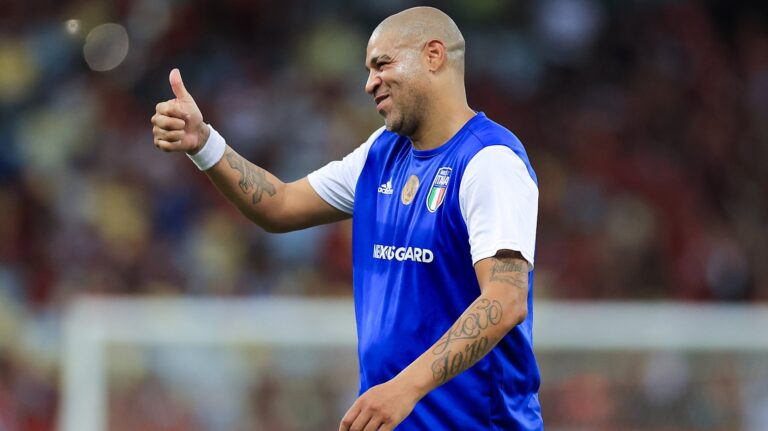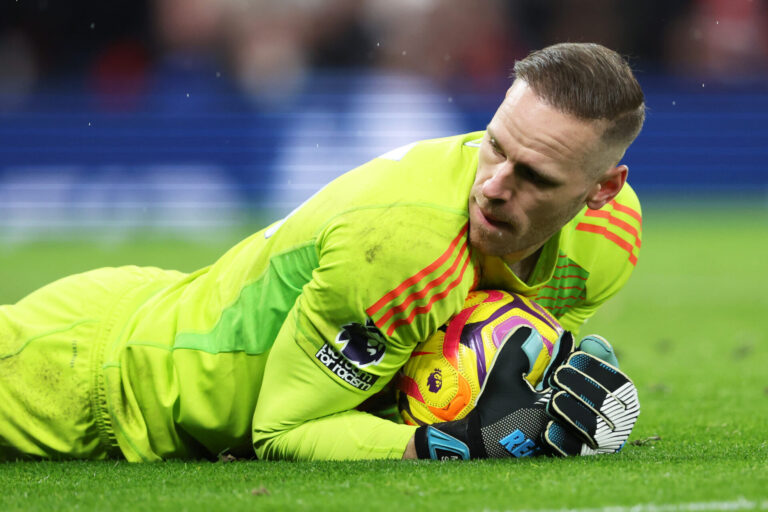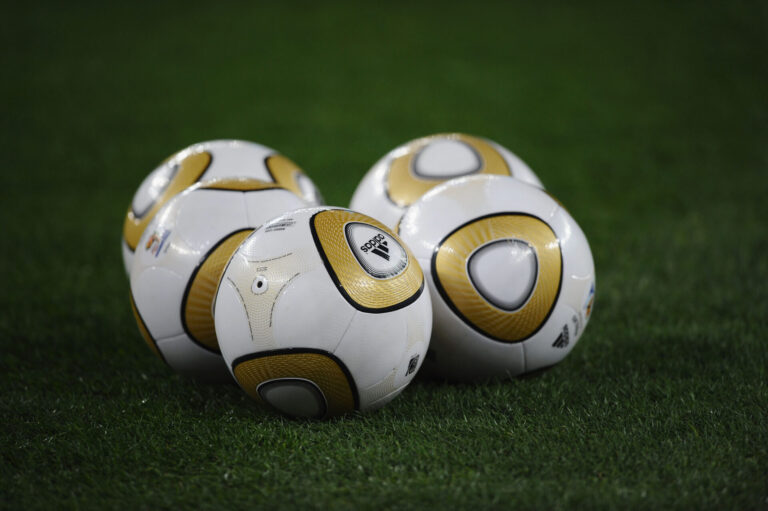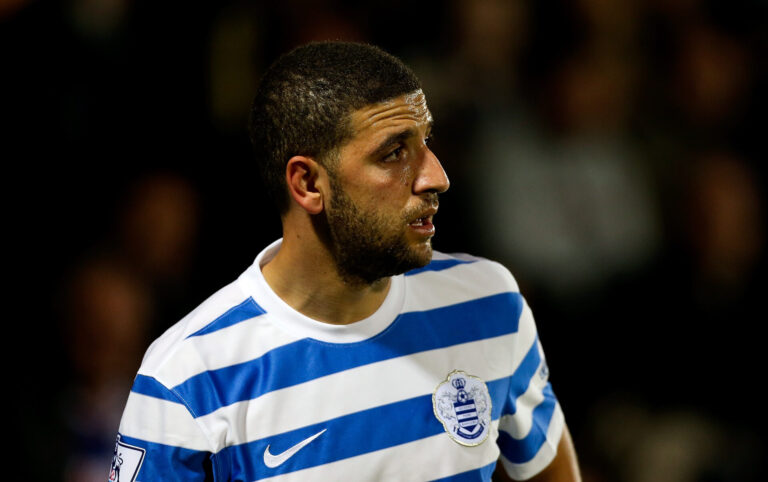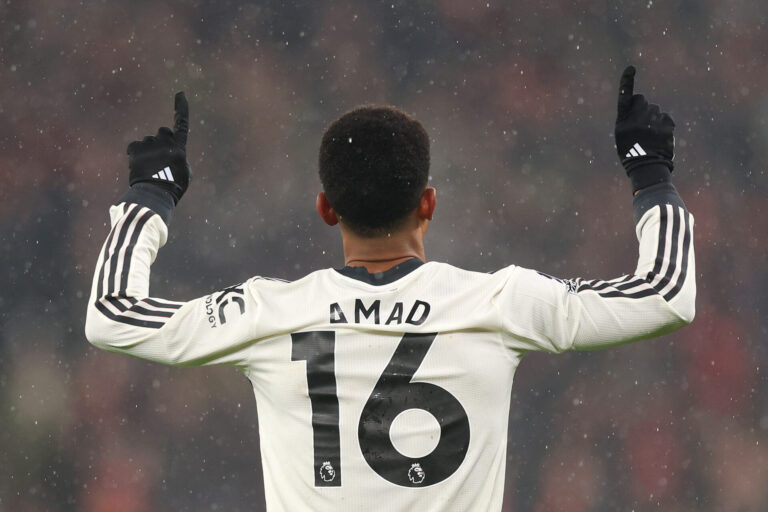Germany: Euro 2024 Preview
Euro 2024 has come around and it’s been a decade since the German National team lifted the World Cup in Brazil. Since then, the Mannschaft has gone through disastrous moments. They haven’t been able to qualify from the group stages in the last two World Cup editions and got kicked out from the round 16 of Euro 2020 against Harry Kane’s teammates.
During this period, four coaches took charge of the German national team. Joachim Löw has been the manager of the 2014 World Cup winners from 2006 until 2021. Then, Hansi Flick took the responsibility, however, the latter was sacked after underwhelming performances from his German side on international stages. Then, Rudi Völler stepped up as an interim before they recruited the current coach, Julian Nagelsmann.
The 36 years-old has been in charge of the national team since September 2023 and managed only eight games in which he secured four wins (vs United States, France, Netherlands, and Greece), two losses (vs Turkey and Austria), and two draws (vs Mexico and Ukraine). Under Julian Nagelsmann, Germany performed two solid tactical games against France and the Netherlands in March 2024 sending hope and reassurance to their fans before the Euro 2024 in front of their public.
Germany Eleven Veterans:
Under Julian Nagelsmann, Germany often uses a 4-2-3-1 formation. Manuel Neuer continues as the first-choice goalkeeper for the German national team. Joshua Kimmich meets again with his old-new role as a right-back, while Mittelstädt operates as a fullback on the left side. In the middle of the backline, it seems that Germany’s coach puts all his confidence in Jonathan Tah and Antonio Rüdiger to protect the defence. Toni Kroos recently returned from his international retirement, and Robert Andrich formed double pivots in the midfield.
Ahead, Julian Nagelsmann relies on the talent and the flair of Jamal Musiala and Florian Wirtz to wreak havoc in the opposition half. In contrast, Ilkay Gündoğan, the captain of the German boat, plays in an advanced position utilizing his tactical intelligence in developing attacks and play-making. Kai Havertz maintains the same role he’s playing with the Gunners as number nine tasked with sniffing spaces as a Raumdeuter.
Keep It Direct:
In possession, Julian Nagelsmann set his team up with 3-2-5, 3-1-6 or 3-1-5-1 shapes. Toni Kroos usually drops next to Jonathan Tah and Antonio Rüdiger to benefit from his ability to distribute the play and dictate the tempo of the game allowing Mittelstädt to push on. Jamal Musiala and Florian Wirtz play in the half-spaces taking advantage of their skills to operate in tight areas.
Julian Nagelsmann is one of the most versatile coaches of this era. He always looks for enticing opposition backline and hurts them immediately after the appearance of the space behind. That comes through Toni Kroos long passes against France.
With the 4-4-2 mid-block and narrow compact shape, the French national team made it impossible for the Germans to play centrally on the floor. However, the Mannschaft were able to find solutions. Havertz’s intention to drag Pavard or Upamecano with him, Wirtz on the left inside channel pining Koundé and Gündoğan coming deep pulling Tchouaméni out, drove Musiala to successfully sneak in behind Rabiot’s back and run down the right inside channel to get Toni Kroos long pass.
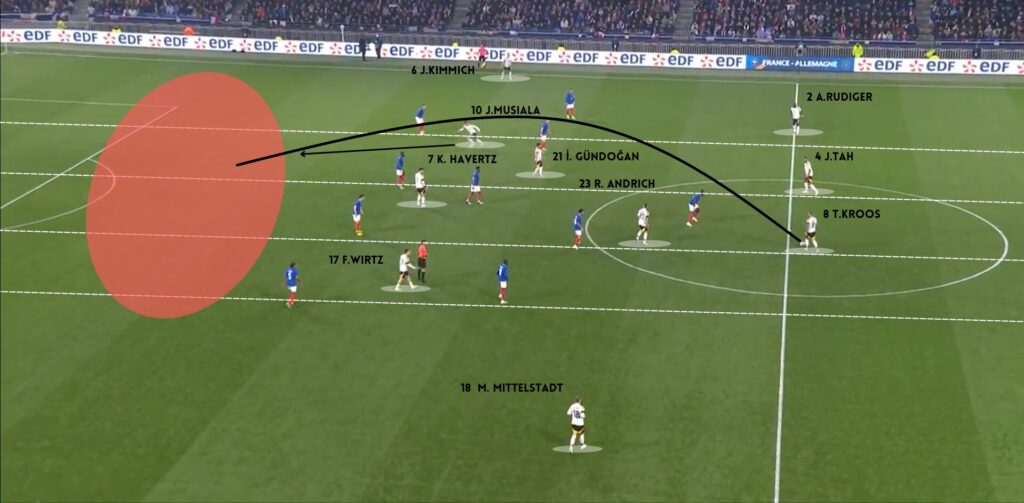
Narrowing players centrally to create spaces out wide for the fullbacks to exploit is another pattern used by Julian Nagelsmann during his tenure with Germany. The 36-year-old coach intends to stretch the opposition lines as much as possible relying on Ilkay Gündoğan movements to drop deep and pull out a midfielder with him and the trio (Musiala, Havertz, and Wirtz) runs vertically toward the defenders. By doing so, the process results in expanding the opposition lines vertically.
Here, Germany executed the aforementioned frames by the book which offers Kai Havertz time and space to receive the ball and lay it off to Wirtz. The latter, operating in the area vacated by Gündoğan, switches the ball to Mittelstädt in isolation who takes advantage of Musiala’s in-depth run to exploit the space created on the left side of the pitch.
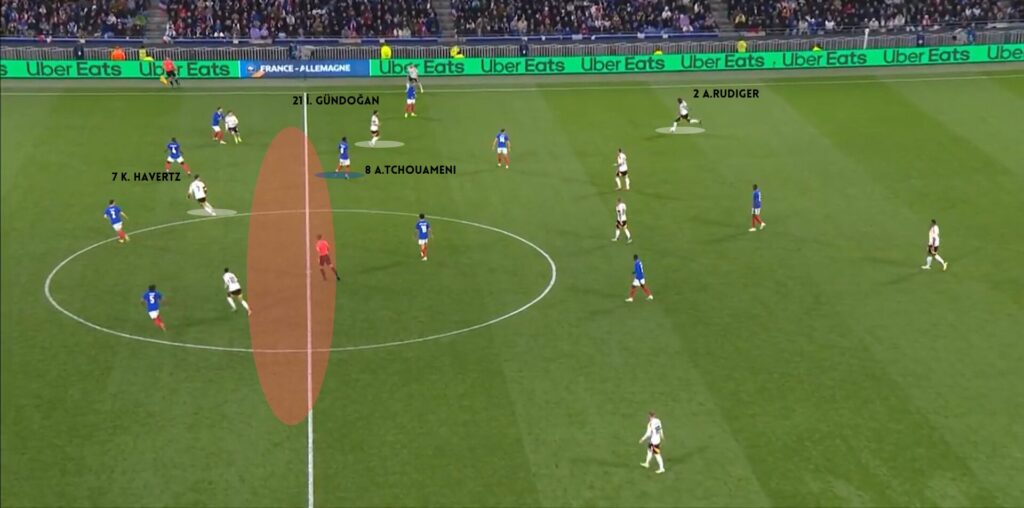
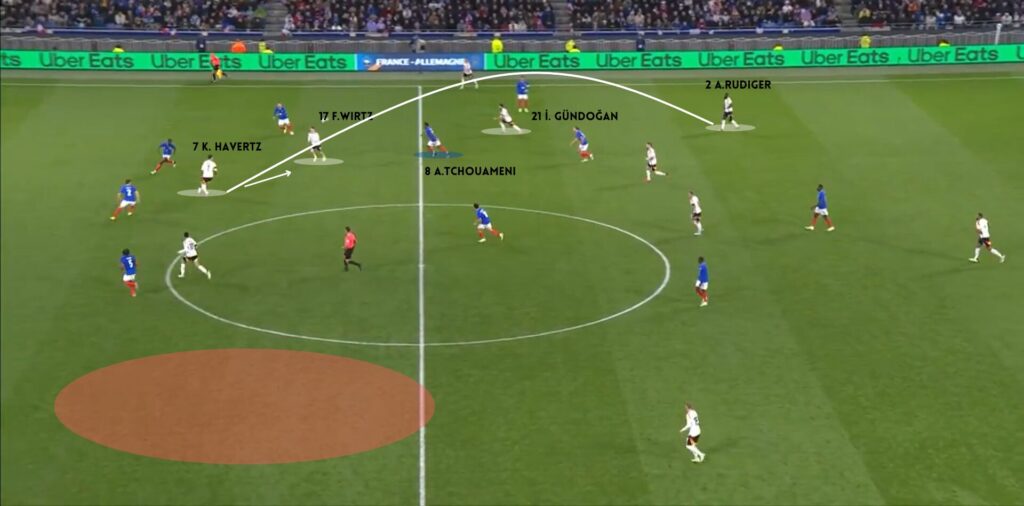
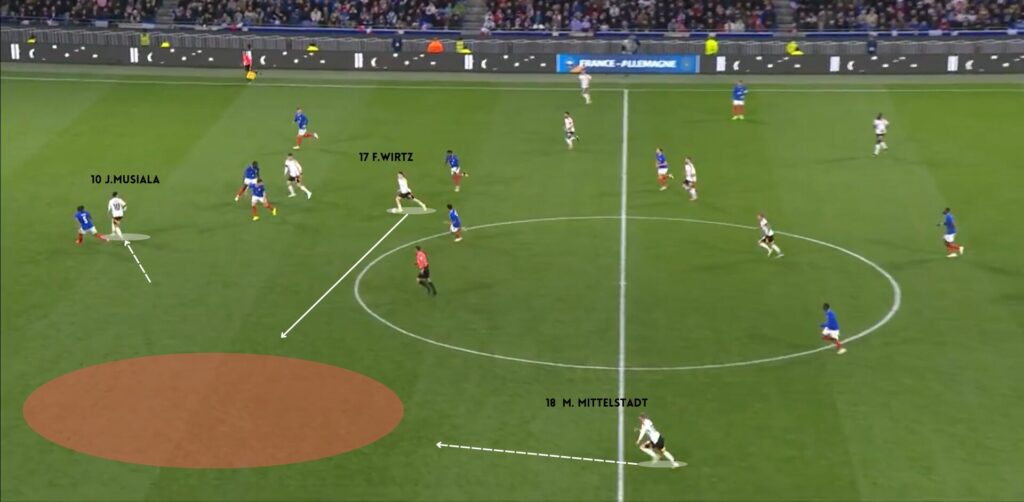
The Germans are composed on the ball, they are willing to return it to the back starting another process keeping the vertical and direct trait. So, a breaking line pass from the back to one of the front players—usually Gündoğan— (central combinations) is an alternative to progress in possession. In the same regard, Wirtz and Musiala are one of the German outlets.
Julian Nagelsmann gives them the license to roam freely and trusts their abilities to interpret the game. Both offer the team options to progress high up the pitch. They built a great sense of understanding each other positions and movements. Jamal Musiala said: “I feel good with Wirtz on and off the pitch. We talk to each other a lot and we always look at where one of us is when the other starts dribbling.”
Jamal Musiala’s statement was crystal clear in Havertz’s goal against France. Once Florian Wirtz took on Koundé and Zaïre-Emery, Musiala started running diagonally to attack the space vacated by Havertz drawing Upamecano’s attention. Wirtz played the ball over to put Musiala face-to-face with the goalkeeper.
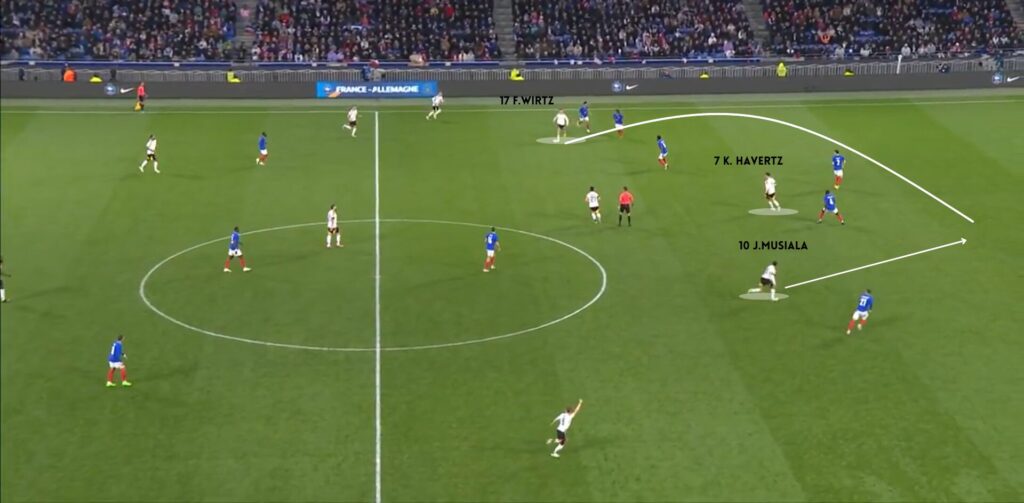
In the same game, Florian Wirtz was a trap to drag French midfielders out of their positions, opening spaces between the hosts’ lines for German forward players to obtain the ball. For instance, Wirtz, dropping to the midfield and laying the ball off to Andrich, pulled out Rabiot with him, and stretched France’s lines. Musiala took advantage of the situation to receive the ball from Andrich, turn around, and pass the ball to Havertz who was attacking the box.
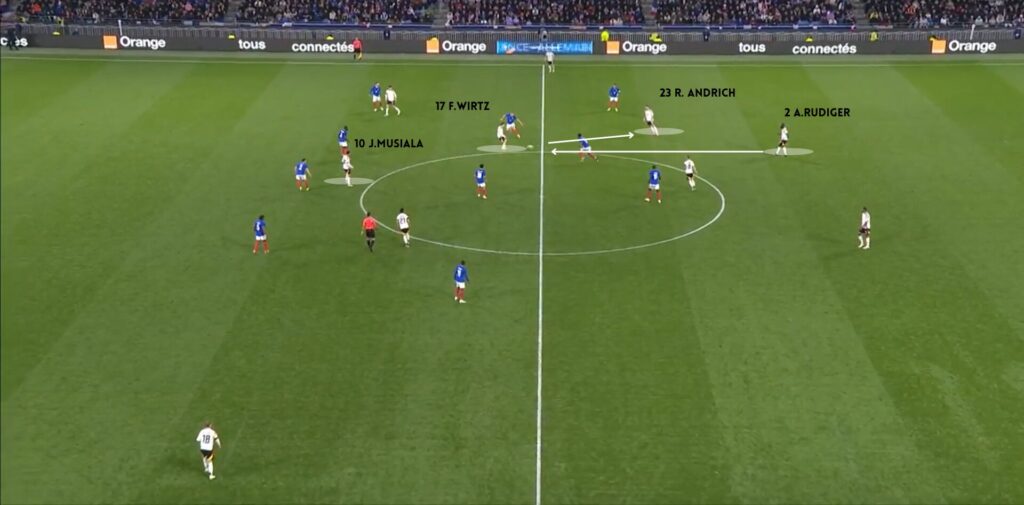
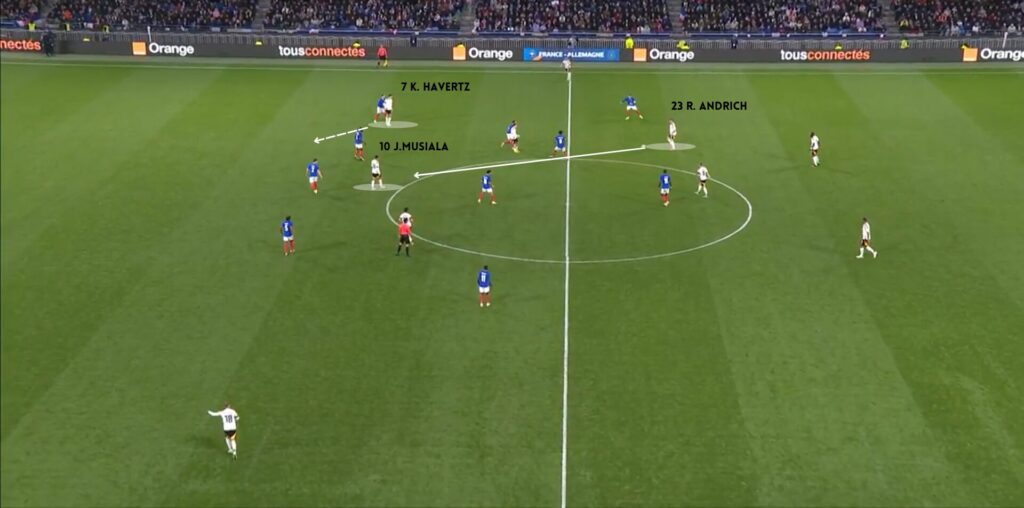
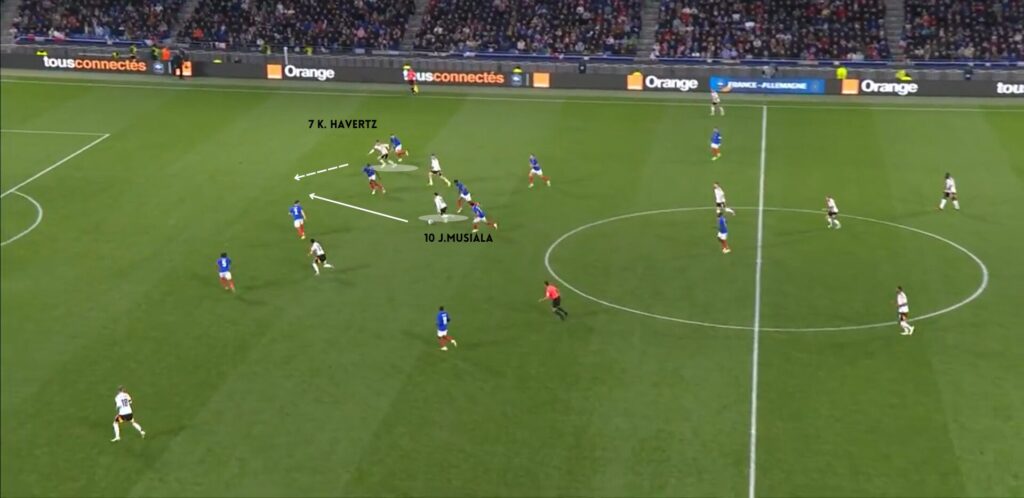
Mannschaft Out Of Possession:
Without the ball, Germany press their opposition with a 4-4-2 shape. Julian Nagelsmann prefers to set up pressing traps like all the German coaches. Germany set up in a high-to-medium block waiting for the ball to go out wide near the touchline or for one of the opponents to play the ball backwards to initiate the press.
France built their attacks with a 4-2-3-1 shape, while Germany pressed them in a 4-4-2 mid-block. Julian Nagelsmann’s boys allowed the French backline to circulate the ball between each other preventing the central progression. Kroos and Andrich man-marked Emery and Rabiot respectively whereas Tchouaméni was outnumbered by Havertz and Gündoğan.
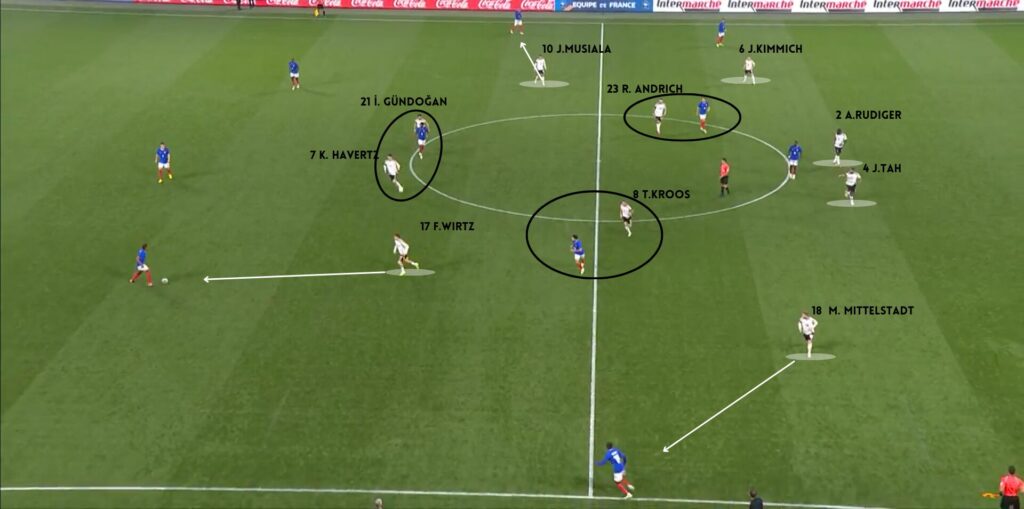
German fullbacks took charge of France’s wingers (Dembélé, Mbappé). Nagelsmann set a pressing trap on the touchlines which was obvious on his players’ body orientation toward the wide channels. For instance, Koundé has one option on the right wing. Once the ball was played, Mittelstädt and Wirtz jumped over him, cut all passing lanes off, and turned over.
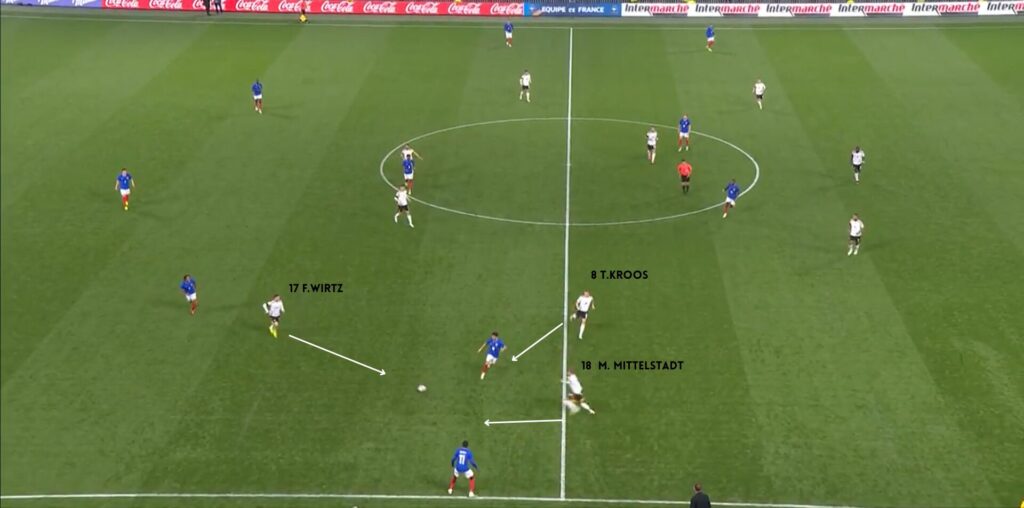
When the Germans opt for a low-block defense, Julian Nagelsmann instructs his boys to drop deep and protect their box as one unit. That comes through the horizontal and vertical narrow shape to close down all the passing lanes relying on players’ cohesion, organization, and aggressive pressing when the opposition tries to play in the German half.
Germany under Julian Nagelsmann is a team that counts on counter-press. However, when opponents manage to bypass it Germany gets exposed behind. That’s because they involve many players in the third phase of the play especially how Julian Nagelsmann uses his fullbacks to participate in creating chances in the final third. Doing so leaves spaces behind the fullbacks that are hard to defend against quick players.
The prime example is when Germany played against Ukraine. Jonathan Tah plays a diagonal pass towards Mittelstädt however, the pass doesn’t reach the target. Andrich, Gündoğan, and Groß counter-press the ball holder but they get bypassed. Due to Germany’s fullbacks pushing high up the pitch, and their counter-press being bypassed, Anton and Tah were left exposed to the Ukraine transition.
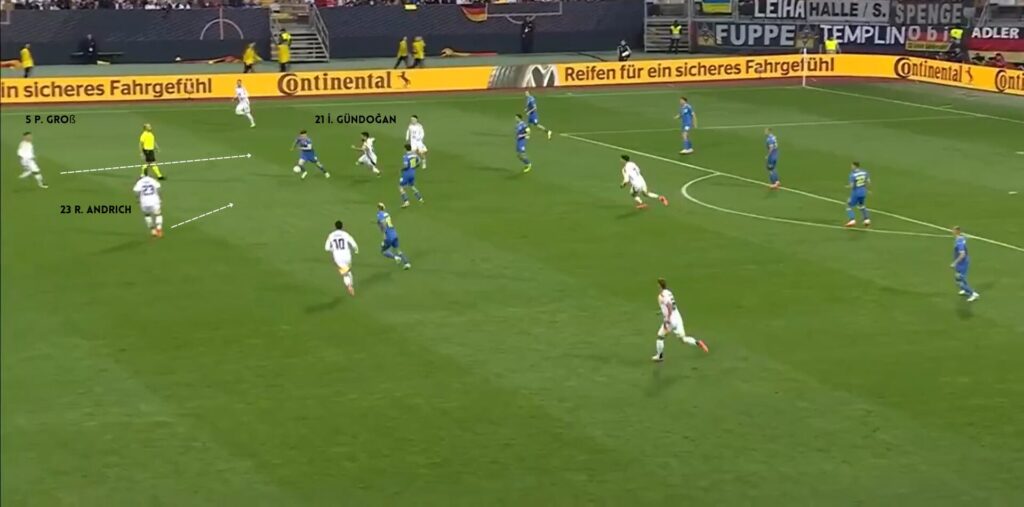
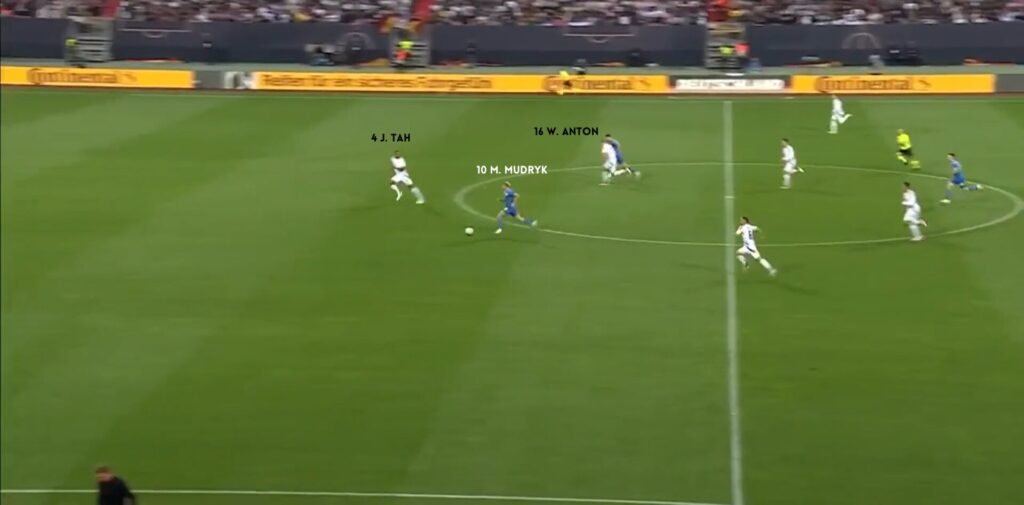
Conclusion:
The German national team includes experienced players of the likes of Manuel Neuer, Toni Kroos, Antonio Rüdiger, Joshua Kimmich, and Ilkay Gündoğan,… able to lead their country with talented players of the calibre of Jamal Musiala, and Florian Wirtz,…
Most importantly, the Mannschaft has a coach in the dugout who is one of the best managers in the business to lead a team. His tactical acumen and man management can help Germany go further in the Euro 2024 and why not conduct them to the coronation in front of their fans? German fans put all their hopes on this versatile squad led by a top-notch coaching staff.
The Mannschaft have to take advantage of the fact that the competition is hosted by their nation. Over history, Four national teams have won the Euros as hosts: Spain in 1964, Italy in 1968, and France in 1986. Adding to that, three national teams reached the final on home soil, only to lose Belgium (1980), Portugal (2004) and France (2016).
The road to Olympiastadion Berlin starts when Julian Nagelsmann’s boys play against Scotland in the opening game before facing Hungary and then Switzerland. They have to level up to the real German standards to end this period away from the glory.


